Cisco 300-510 - Implementing Cisco Service Provider Advanced Routing Solutions
Refer to the exhibit.
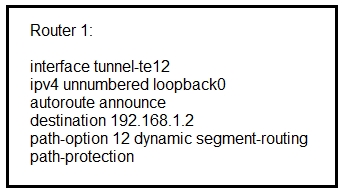
Router 1 has established an SR-TE tunnel with router 2. Which statement describes this
configuration?
Refer to the exhibit.
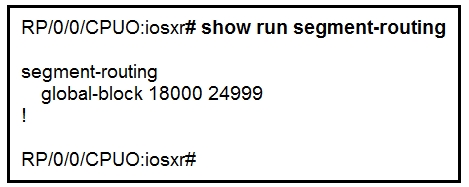
A network engineer implemented this segment routing configuration. Which statement
about the output is true?
ION NO: 86
Refer to the exhibit.
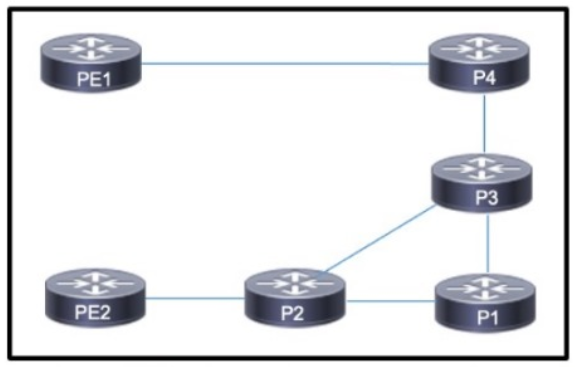
A regional service provider provides connectivity for several midsize businesses that run mission-critical applications between multiple offices connected via PE 1 and PE2 Links throughout the service provider network are connected using shared resources and an SR-TE tunnel is in use to route traffic over different paths depending on congestion policies The networking team must implement SR updates to reduce downtime in the event of a link failure. Which action must the team take to meet the requirements?
Refer to the exhibit.
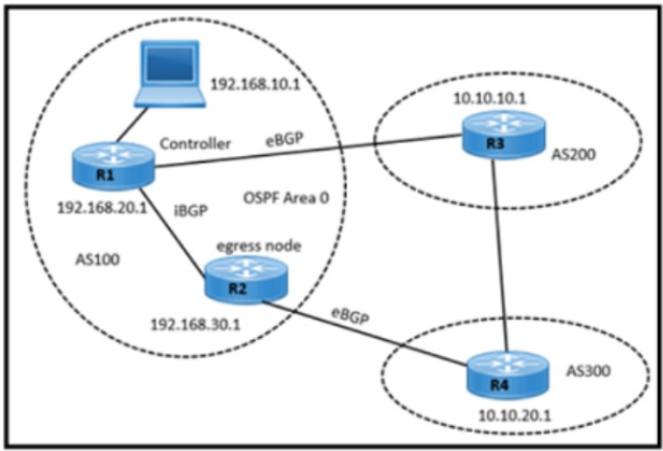
A network engineer must enable segment routing between the three autonomous systems with these requirements:
·OSPF link-state data for area 0 routers must be distributed to the controller via BGP LS.
·EPE must be enabled on the egress node in AS 100.
·Routers must advertise peer node SIDs to the controller R1 via BGP LS.
Which configuration must the engineer apply?
A)
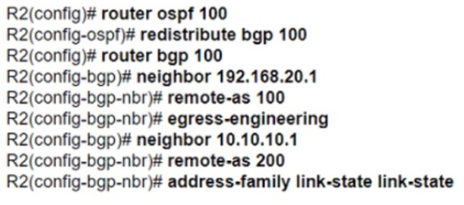
B)
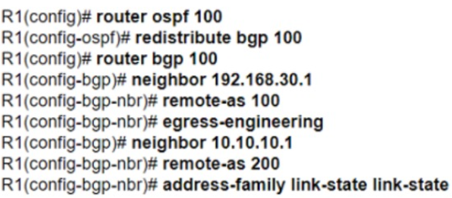
C)
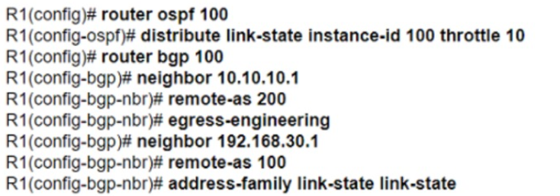
D)
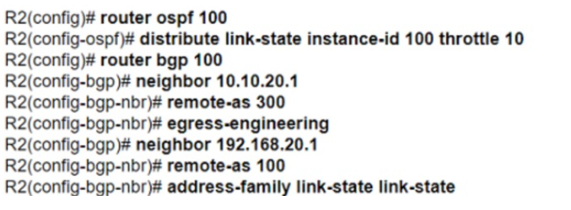
What can be used to determine a path from the head-end to a tail-end router when implementing SR-TE with a head-end, with little information on the network topology?
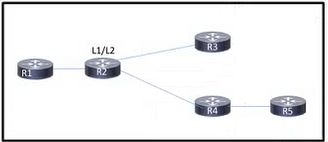
Refer to the exhibit Reuters R2. R3, R4 and R5 all reside in the same area, with R1 in a different area R3 is overutilized and the engineer wants to reduce its CPU load The engineer configured router R4 to summarize routes that it receives from R5. but R3 is still receiving all of the R5 routes. Which action resolves the issue?
An engineer is working to implement segment routing protocol on the customer's core network. Which step should the engineer take before the segment routing is enabled and is running with BGP?
Refer to the exhibit.
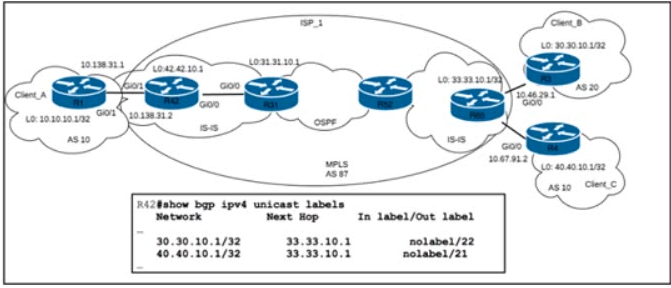
ISP_1 uses eBGP for connection to all clients LDP with OSPF and IS-IS is used in the ISP_1 network Client_A and Client_B are in the same VRF_VoD. After oftware upgrade on all routers on the ISP_1 network, Client_A has lost the connection to Client_C. A network engineer must troubleshoot the connection from R1 to R4 via M. After initial checks, the engineer confirmed that all routes are installed correctly. Which two tasks must the engineer perform to correct the problem? (Choose two.)
An engineer configured OSPF on all routers in the data center in the same exchange as other routers Layer 2 connectivity was established. Now, the engineer plans to implement BFD to detect failures in the forwarding path. Which action must the engineer take?
Which two characteristics unique to SSM when compared to ASM are true? (Choose two.)



